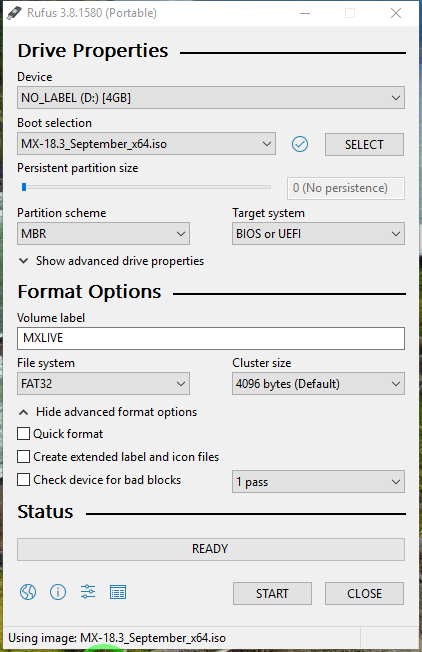
- Unetbootin persistence how to#
- Unetbootin persistence install#
- Unetbootin persistence manual#
- Unetbootin persistence iso#
** NOTE: The Bodhi installer runs best with more than 512MB of RAM (ideally 1GB or more). NOTE: ALL DATA WILL BE ERASED DURING THIS PROCESS!.– A USB drive that contains no important data.Wth a large enough USB drive, you can carry around any number of operating systems that serve numerous purposes. You should now have a multi-boot USB drive that is in working order. After you make the necessary edits, close and save the file and reboot the system. Make sure to relabel the “ubnenetryX” entries so they are in consecutive numerical order. You must copy the above four lines between the “label ubnentry1” and “label ubnentry2” entries. Where DISTRIBUTION is the name of the distribution you originally installed. Those lines will look like this: label ubnentry0 From that file, copy the last four lines and paste them in the syslinux.cfg file on the USB drive. In the folder on your desktop, you must open the syslinux.cfg file. You want to copy everything from the hard drive to the USB drive except the following:

Unetbootin persistence install#
Now open two file manager windows: one to the USB drive and one to the newly created directory containing all the files from the first install you did on UNetbootin. Then, repeat the steps above, selecting the next OS you want on the USB drive. You must copy everything from the USB drive to a new directory on your hard drive. After UNetbootin completes the install of the first OS, reboot the machine to test the OS on the USB drive.įigure C Make absolutely sure you select the right USB device from the Drive drop-down before you continue otherwise, you could wipe out the wrong drive.
Unetbootin persistence iso#

Unetbootin persistence manual#
Both are simple, but the Linux version requires more manual work.


Unetbootin persistence how to#
Here’s how to do this with two tools: XBoot (using Windows 7) and UNetbootin (from within Linux). When you want to have a single USB stick with multiple operating systems, the end result must be a reliable USB drive that contains the operating systems you need. Get instructions on how to use XBoot or UNetbootin to have a USB stick with more than one operating system.


 0 kommentar(er)
0 kommentar(er)
